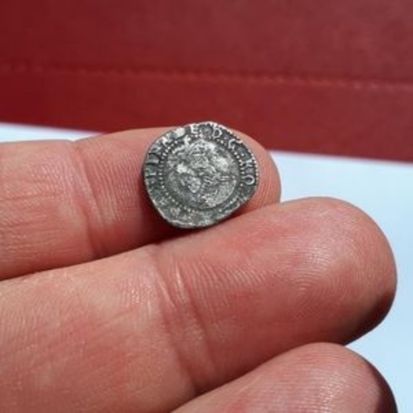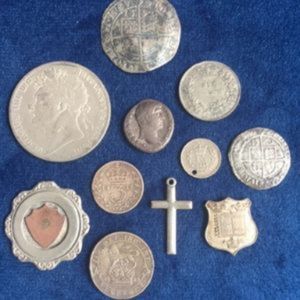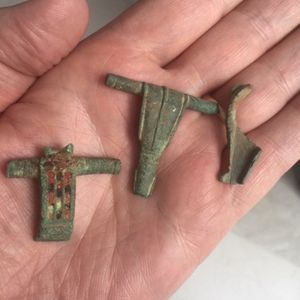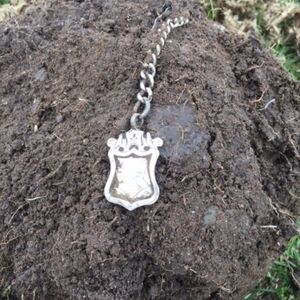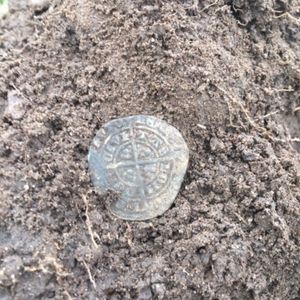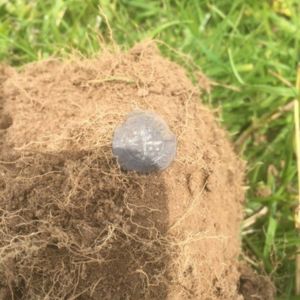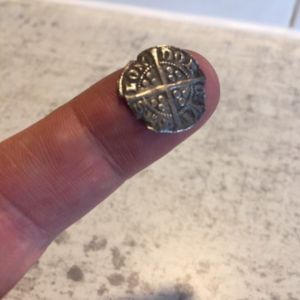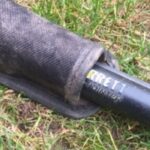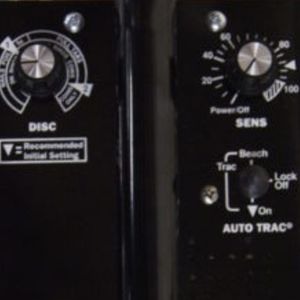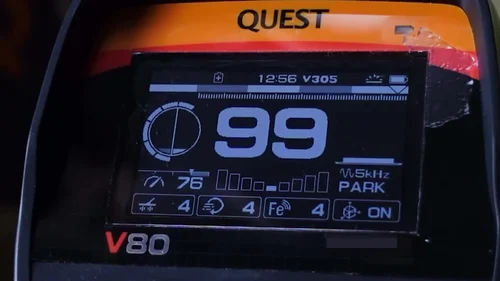How do metal detectors discriminate?
Metal detector discrimination is an adjustable setting on a metal detector that allows you accept or reject certain metals based on their conductivity, allowing you to either hear an accepted tone or not produce a tone for a rejected metal, usually trash or iron.
Most metal detectors on the market today will have some sort ability to discriminate. What do I mean by that?…..it is simply the ability to ignore certain metals so that they do not give you an audible signal.
The subject of metal detector discrimination can be quite complex. Different metals have different levels of conductivity. I have an article on what a metal detector can detect here.
It therefore means that the higher conductivity a metal has, if you want to reject it, the higher the discrimination setting will need to be on your detector.
This is the simplest way of looking at discrimination but as I said, it’s a little more complicated than that. Don’t worry though, we’ll take a look into this now.
Don’t forget, you can also read my article on choosing the best metal detector for beginners here.
Conductivity of metals
Conductivity of metals chart
Let’s first put a list up of typical metals that you could find metal detecting in order of conductivity.
Pure Silver High Conductivity / Low Resistivity
Pure Copper
Gold
Pure Gold
Pure Aluminium Medium Conductivity / Medium Resistivity
Iron
Leaded Tin Bronze
Lead
Platinum
Cupro Nickel (30%)
Tin or Foil Low Conductivity / High Resistivity

Ultimate Tactical Packs!
Carry everything you’ll need for a detecting day like a First Aid kit, detector spares, finds boxes, batteries, snacks and drinks to rehydrate.
Never forget anything again with a belt pack!
Which metals conduct electricity the best?
As you can see from the hierarchy above, copper and silver are the most conductive metals in terms of metal detecting finds. This is why you’ll find them at the far end of a metal detectors target ID scale.
You can further read my article on how to read a metal detector target ID scale here.
Let’s first start at the beginning and remind ourselves how a metal detector works in its simplest form. A metal detector consists of a battery pack that supplies the electricity and coil at the end of the shaft.
The coil consists of a massive amount of copper wire that is coiled around a certain shaped coil head. Within this, there will be a “transmit” coil and a “receive” coil.
When electricity is passed into the transmit coil, it creates a balanced electromagnetic field around the search head.
When the search head is passed over a metal object, the transmitting electromagnetic field “energises” the metal object kind of making it jiggle around so to speak. (called eddy currents)
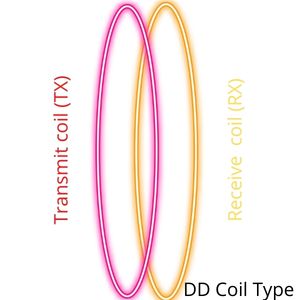
This is then picked up by the receiving electromagnetic field giving you a signal in your headphones.
The clever part in between this is how the metal detector tries to work out what the metal is that you’ve discovered.
How does it know how to distinguish this object from another object?
The clever part is that stored inside the detectors electronic brain are a list of metals and their conductivity readings which it can compare.
There is also another piece of information that the detector uses to determine the target.
As well as a metal target having a specific “conductivity”, it will also have a corresponding “resistivity” which relates to how much the target can be penetrated by the electromagnetic field.
Finally, there is also something called “inductance permeability”. This is a measure of how easy it is for a metal object to be “magnetised” by an electromagnetic field.
It just so happens that iron is a lot more permeable than all the other metals. It’s for this reason that iron is the easiest metal to discriminate on a detector because of how easy this is to measure.
So, where have we got to?…..you have your detector and you have passed your search head over the ground and have detected an object.
You know something is there but it’s only by penetrating the object as much as possible can you get a more accurate idea of what it is.
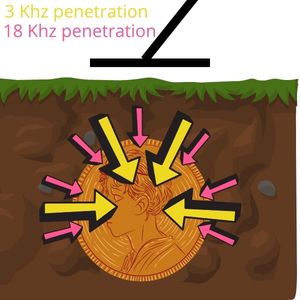
The deeper the penetration, the more accuracy you get. This is where things can get a little complicated but stay with me!
Keep in your mind that in order to determine what a metal is, you deeper into the metal object you have to penetrate.
There are three factors that effect the depth of penetration of an object.
These are the frequency the detector is using, the objects conductivity and the permeability. (How easily it can be magnetised)
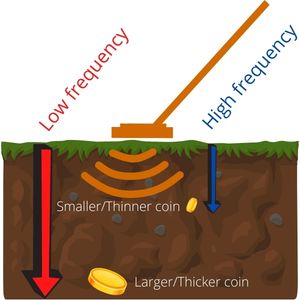
Penetration of an object drops as operating frequencies increase, the objects conductivity increases and its permeability increases.
I know it’s a tough one to understand but this is what the detector works out in its processor brain!
Okay, so let me now give you an example. Say that there are two coins buried in the ground.
Both copper pre decimal but one is a full penny and the other is a smaller farthing.
They are both buried at the same depth and are both, miraculously laying flat in the soil.
When you pass your search head over these coins, the larger penny will give a more accurate reading due to its larger surface area and greater thickness allowing more of it to be penetrated.
Single frequency detectors use a variety of detecting frequencies depending on who manufactures them. Typical operating frequencies can be from 3 Khz through to 18 Khz.
Specialised single frequency machines can go a lot higher than when searching for small gold nuggets.
The long and the short of it is, lower frequency detectors punch deeper into the soil and detect larger, thicker coins and objects best.
Higher frequency detectors don’t punch as deep into the soil but detect smaller, thinner coins like medieval hammered coins or objects best. You can read my article on medieval silver hammered British coins here.
Higher frequency machines also tend to have more problems recognising iron where as lower frequency machines recognise iron better.
As targets get deeper, single frequency machines tend to get a little mixed up and can see these objects as iron. Aluminium is also tricky as rejecting foil can mean missing wanted targets.
I have a short article about can metal detectors detect aluminium here.
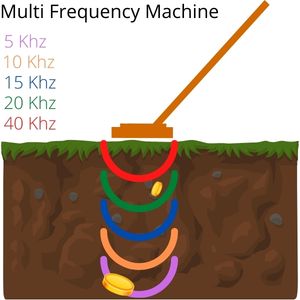
Before technology advanced to where it is today, you paid your money and took your choice.
You either went for a low frequency machine, a medium frequency machine or a higher frequency machine.
These would typically be either 3 Khz, 7.5 Khz or 18 Khz.
Technology has now advanced to where you can now get “multi frequency” machines that give you the best of all worlds.
Multi frequency machines gather massive amounts of data from an object making target identification much more accurate, stable and at greater depths.
These machines when they first came out were super expensive. You can now get this technology for under £250 with the entry level Minelab Vanquish 340.
This machine operates with 3 simultaneous frequencies, all gathering data at the same time with low, medium and high frequencies punching deeper into the soil and giving more stable target ID’s.
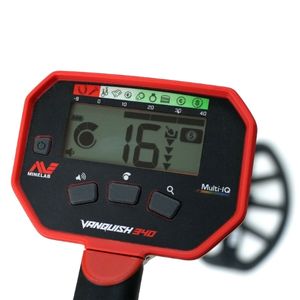
Unbeatable Multi Frequency!
You can now get the ultimate power of multi frequency technology over single frequency detectors with the Minelab Vanquish range of detectors.
The entry level Vanquish 340 now gives you ultimate depth, stability and sensitivity on all target types in every soil, including wet beach sand.
Metal detector discrimination setting
Contrary to most detectorists thinking, even the most experienced ones think that as you increase discrimination on your detector, the less deep you’ll be able to detect. This actually isn’t true.
Another myth is that isn’t true is that if you increase the discrimination setting, you’ll lose smaller targets.
It isn’t because they are being ignored by the discrimination, it’s because the small target just isn’t large enough to cause the particular detector you’re using to detect it. This could be down to its frequency.
As the discrimination setting rises, the differences between the conductivity of iron and “good” targets narrows.
Therefore, a larger “good” is needed in order for it to be heard. It’s always best to keep discrimination settings as low as possible.
Higher settings can cause deeper targets to simply disappear in the background noise from ground mineralisation.
It is common practice as I’ve mentioned to keep discrimination settings as low as possible. This is usually to ignore iron and to dig everything else that gives a good, clean, sharp and repeatable signal.
Many seasoned detectorists drop their discrimination slightly lower still so that iron isn’t ignored but gives a broken, “spitty” sound.
Any discrimination setting above the range of iron and into the foil range carries a risk that some very nice targets maybe ignored, well…..in the UK at least!
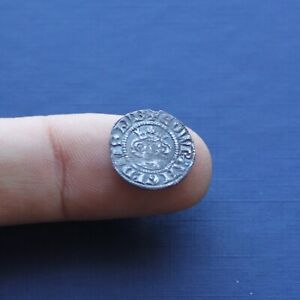
Small, medieval silver hammered coins very often fall into the detectable range of foil so be careful.
In the United States, they don’t have these types of coinage so their discrimination settings can be more aggressive.
Older detectors have what is called a progressive discrimination setting. This usually consists of a dial that gets turned. The more it gets turned, the higher the setting.
Being progressive, it means that any targets that are rejected earlier at the previous settings will also rejected at the higher settings.
Usually, a zero setting on the dial will set discrimination just below iron and then progress right through to copper and silver.
You could, in your right mind think why someone would want discrimination that goes so high. Well, it really is a result of the US market as they only have coinage that dates back approximately 300 years and is of a certain size and thickness.
In fact it’s quite regularised.
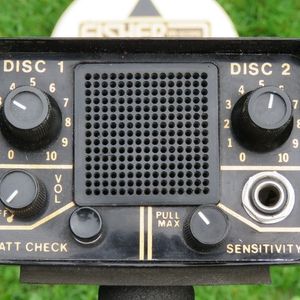
UK history covers an immense period and interesting coinage in all shapes and sizes litter the country.
This is why we have to dig everything! Iron target sizes must also be considered.
The circuitry and discrimination range will only cope with iron of a certain size.
Larger iron can cause an overload and give you a huge signal.
As technology progressed, extra features were being found on detectors like a “Notch” feature.
This would mean that instead of our last progressive example, certain areas of discrimination could be cherry picked and notched out.
For example, if you were beach detecting and were finding lots of ring pulls from drinks cans, you could use one of these ring pulls signature ID’s to only reject the ring pulls and nothing else.
I actually used this notching feature in reverse once when detecting on a popular beach. I rejected absolutely everything but then with a handful of £1 coins, waved them over the coil to make my machine learn to only accept them.
(I was fed up with digging lower value coins!) This meant that my machine at the time (a Minelab Xterra 70) would only pick up £1 coins!
The advantage with notching is that you can create your own discrimination patterns which is when it gets really interesting!
On many machines, the pre set patterns or modes are exactly that. They are discrimination patterns with notches left in and notches left out depending on the pattern.
This might be the difference between a coin only pattern or a coin & jewellery pattern.
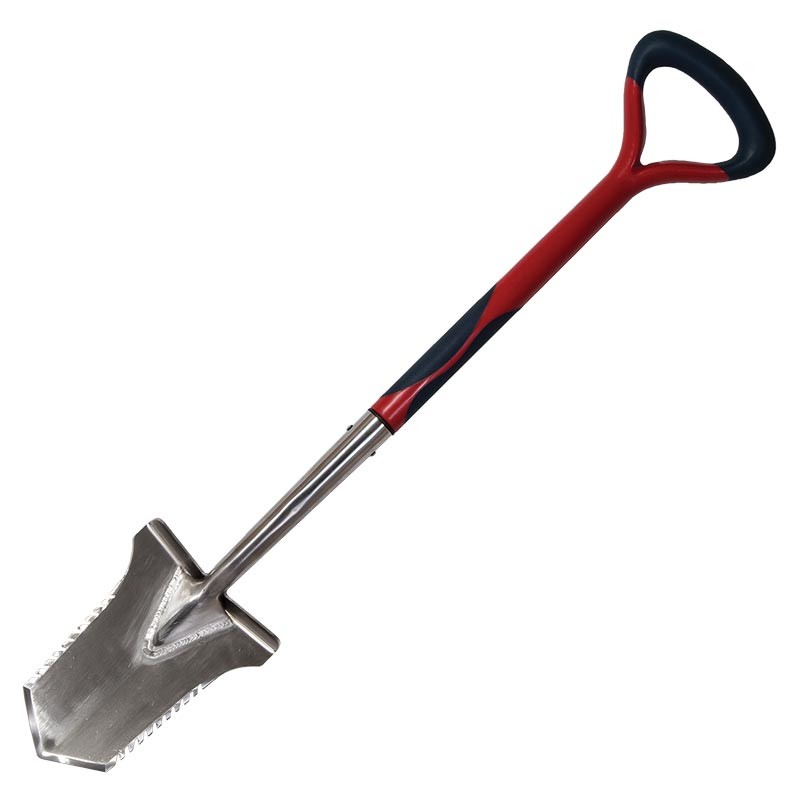
The Evolution Pro Cut
The ultimate accessary for the serious metal detectorist. Super strong, stainless steel specially designed spade.
Final thoughts
So, we’ve covered what discrimination is and does on a metal detector. We talked about the different metals you might find and how they all have different characteristics.
These are conductivity, resistivity and permeability. All of these characteristics help a metal detector determine what type of metal it might be.
We also talked about how a detectors frequency has an effect on trying to determine a targets ID.
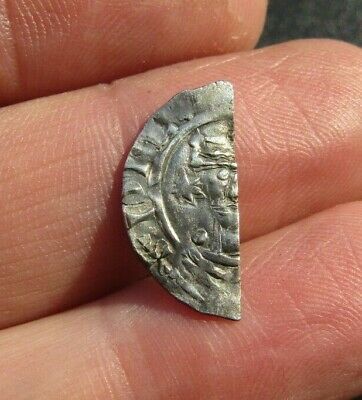
Lower frequencies penetrate the ground deeper and also penetrate a target better. Higher frequencies penetrate the ground less deep and also targets less deep.
The trade off is that lower frequency machines are better at finding deeper, thicker coins where a higher frequency machine will be better at finding smaller, thinner targets like silver hammered pennies, cut halves and cut quarters.
(Interesting fact….in medieval times, the monarchs thought it beneath them to have their heads on any coins other than silver or gold.
The lowest denomination of coin was a silver penny, however you could in those times buy things for less than a penny.
People started to cut the silver pennies in half and then into quarters. They termed the quarters as “forthlings” which eventually became known as “farthings”.)
Many machines have a feature that pre sets the pitch of a tone depending on the metal being detected. Some more expensive machines allow you to set your own tones.
It’s good practice to keep your discrimination set to just ignore small iron, like nails. You could even drop it a little further and by practicing on a rusty nail, just make the signal break up slightly or what detectorists say…..make it “spitty”.
If you have a detector that lets you assign a low tone, or “grunt” for iron whilst the discrimination is off….perfect. If you can adjust the volume of this low tone, even better. This is my preferred method of detecting.
Zero discrimination, a low tone for iron (which I turn down the volume so I can just hear it in the background) and a medium to high tone for everything else.
One way to get the best of all worlds and the best results is to not limit yourself to a single frequency detector.
Multi frequency detectors are very affordable now and an entry level Minelab Vanquish 340 which uses 3 frequencies can be had for under £250.
I currently use a Minelab Equinox 800 which uses 5 frequencies. It’s the best machine I’ve ever owned, and I’ve owned a few!

Unbeatable Multi Frequency!
You can now get the ultimate power of multi frequency technology over single frequency detectors with the Minelab Vanquish range of detectors.
The entry level Vanquish 340 now gives you ultimate depth, stability and sensitivity on all target types in every soil, including wet beach sand.











